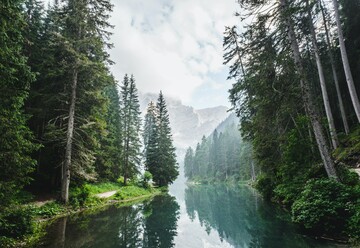What is precipitation?

Precipitation contributes to the formation of the rivers.

Precipitation contributes to the formation of the rivers.
Precipitation is a very interesting word and refers to something very important. Precipitation is when water falls from the sky to the ground. This can include rain, snow, hail, and sleet. Different places in the world have different types of precipitation. For example, if you live in a place where it gets really cold during winter, you might have more snow or sleet than rain.
Rain is when droplets of water fall from the clouds and reach the ground. Snow is made up of tiny ice crystals that fall from the clouds and accumulate on the ground. Hail is made when small ice pellets get picked up by strong winds and freeze in the clouds. And sleet is when raindrops freeze as they fall to the ground.
Precipitation is important because it gives us water. All living things on Earth need water to survive. Plants need water to grow, animals need water to drink, and humans need water to stay healthy. Precipitation is also important for the environment, as it can fill up our rivers, lakes, and oceans.
Sometimes, too much precipitation can cause problems. Heavy rain can cause flooding, which can be very dangerous. Snow and ice can make roads slippery, which can be dangerous for cars and people walking. It's important to be careful and stay safe during extreme weather conditions.
Overall, precipitation is an important part of our world. It brings us water, helps the environment, and can cause problems if we're not careful.
What is condensation?
Condensation is when the air becomes cool and changes water vapor into tiny water droplets. Just like when you have a cold drink on a hot day and you see water droplets forming on the outside of the glass. That's condensation! It happens because the cold glass makes the air around it cool down, and when the air gets cool, it can't hold as much water vapor anymore. The water vapor turns back into water droplets and sticks to the glass.
What is evaporation?
Evaporation is when water changes from a liquid to a gas and goes up into the air. You might have seen this happen before when you leave a puddle of water outside on a hot day and it slowly disappears. That's evaporation! The heat from the Sun makes the water on the ground get warmer and turn into an invisible gas called water vapor. The water vapor rises up into the air and mixes with the other gases in the atmosphere.

Precipitation contributes to the formation of the rivers.